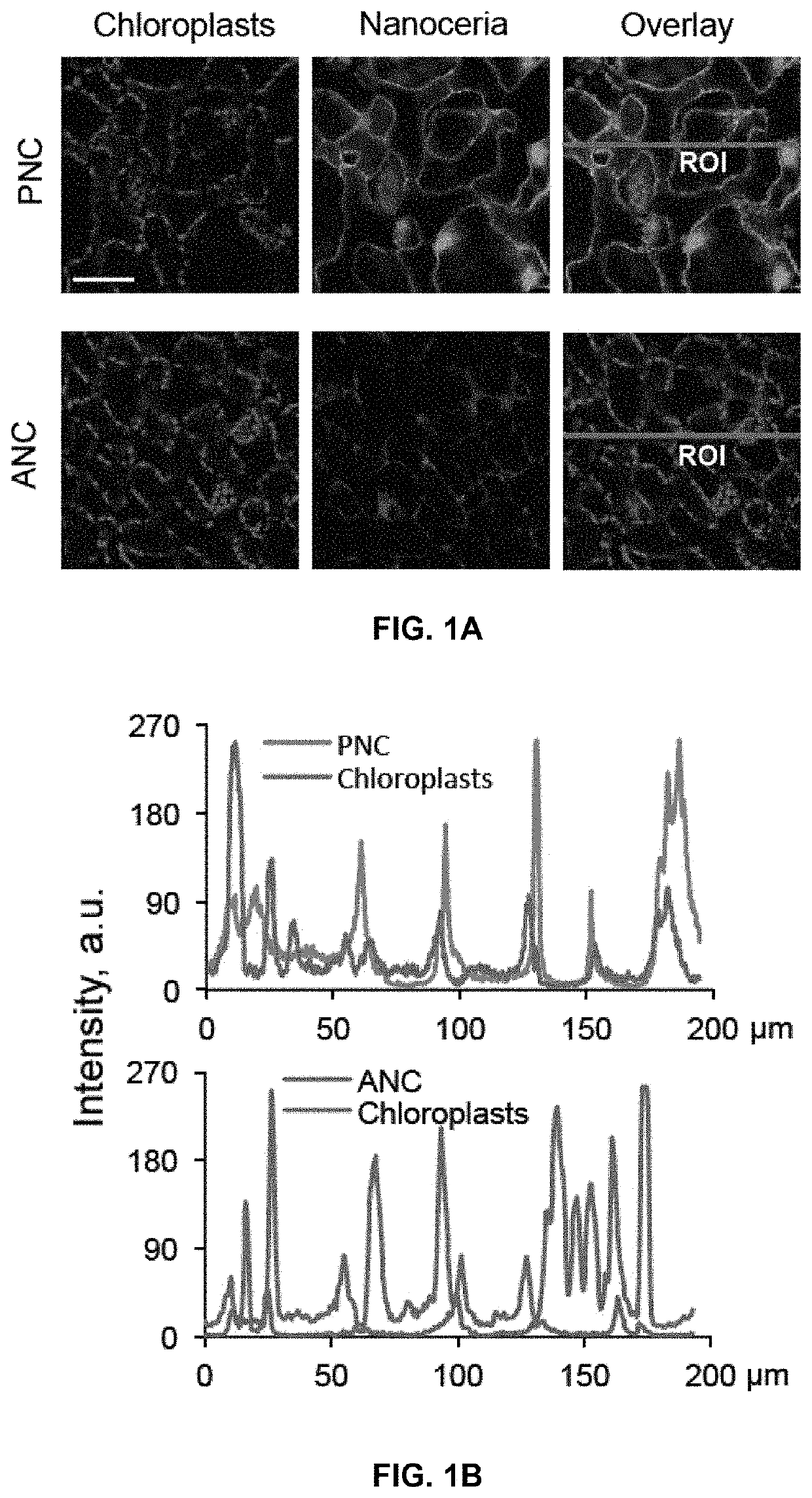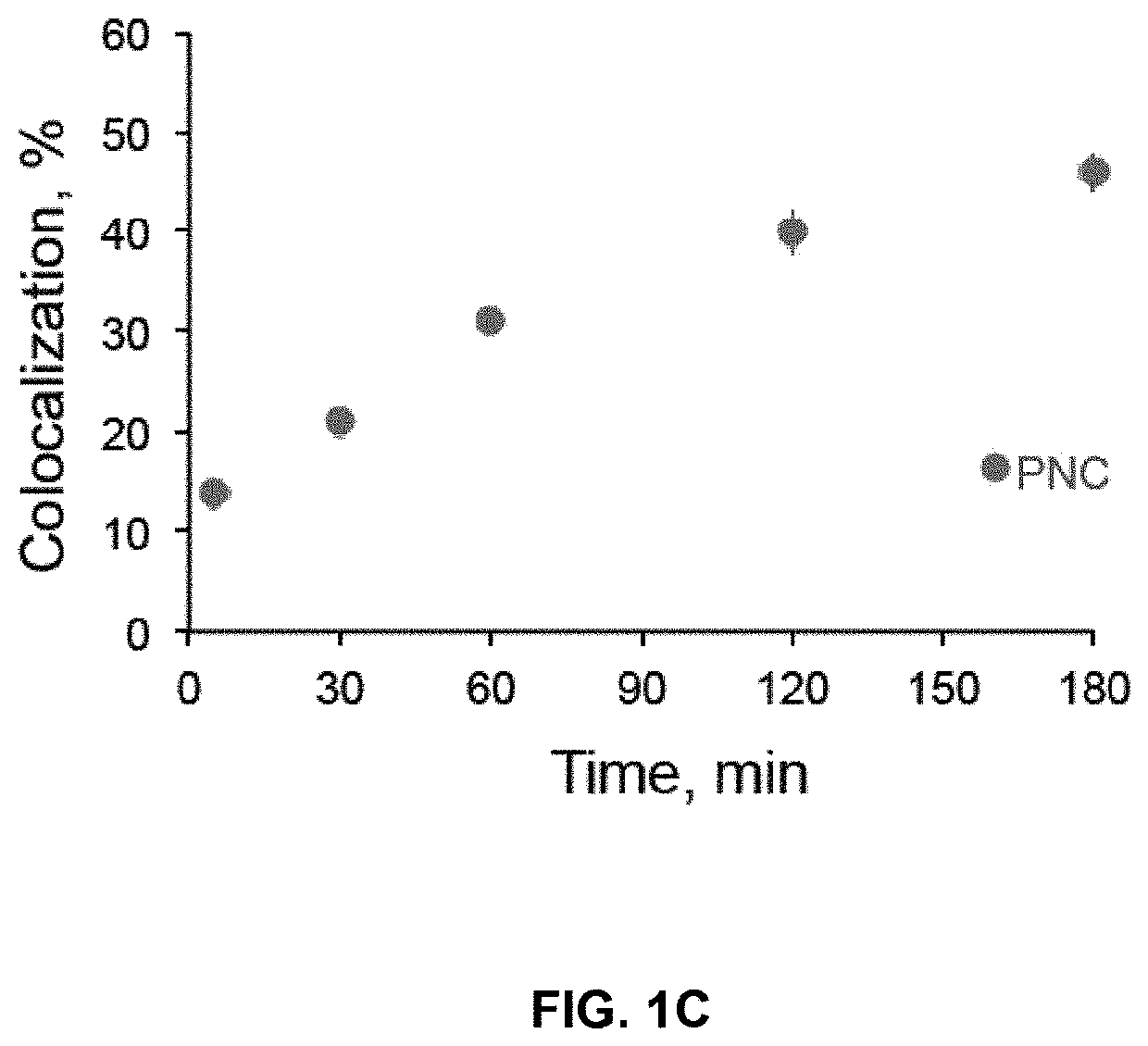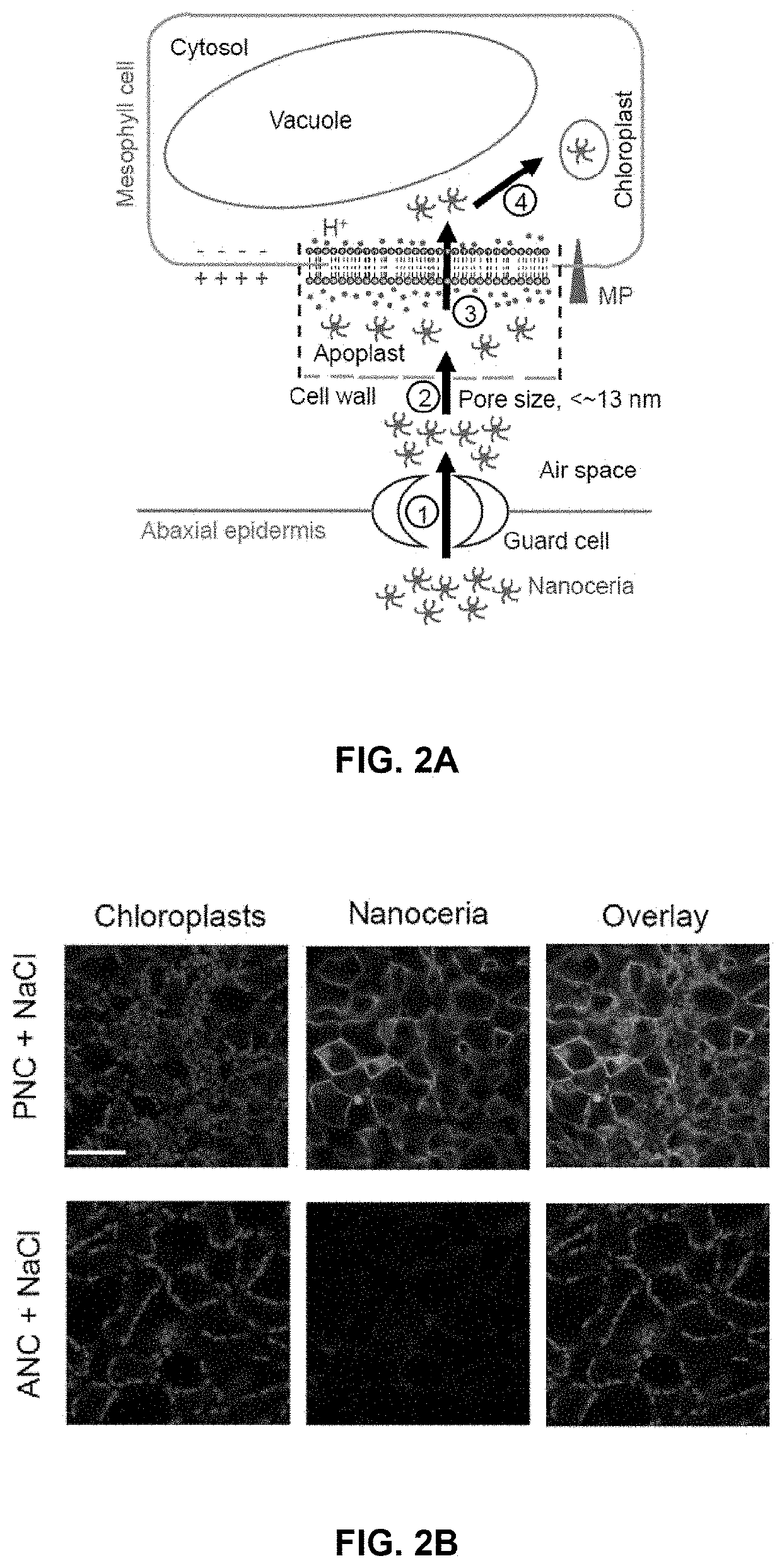Nanoceria augmentation of plant photosynthesis under abiotic stress
a technology of abiotic stress and nanoceria, which is applied in the field of nanoceria augmentation of plant photosynthesis under abiotic stress, can solve the problems of not knowing whether nanoceria reach the site of ros production, their impact on plant photosynthesis is poorly understood, etc., and achieves the effects of enhancing carbon fixation, and reducing reactive oxygen species
- Summary
- Abstract
- Description
- Claims
- Application Information
AI Technical Summary
Benefits of technology
Problems solved by technology
Method used
Image
Examples
examples
[0036]The following examples are offered to illustrate, but not limit the claimed invention.
[0037]Excess light is a main cause of reduction in plant light energy absorption efficiency and carbon assimilation. Herein, we use a nanobionic approach for augmenting plant photoprotection and photosynthetic performance under light stress. Cerium oxide nanoparticles (nanoceria) improve Arabidopsis maximum quantum yield of photosystem II (10%) and carbon assimilation (19%) by protecting leaf mesophyll chloroplasts from damaging reactive oxygen species (ROS). Nanoceria augments scavenging of superoxide and hydroxyl radicals; for the latter ROS there is no known chloroplast enzyme scavenger. Chloroplast in vivo colocalization with negatively charged poly (acrylic acid) nanoceria (PNC) is significantly higher than with positively charged aminated poly (acrylic acid) nanoceria (ANC). The transport of nanoceria through leaf cells is endocytosis independent and affected by the plasma membrane pote...
PUM
| Property | Measurement | Unit |
|---|---|---|
| Quantum efficiency of CO2 | aaaaa | aaaaa |
| temperatures | aaaaa | aaaaa |
| pH | aaaaa | aaaaa |
Abstract
Description
Claims
Application Information
 Login to View More
Login to View More - R&D
- Intellectual Property
- Life Sciences
- Materials
- Tech Scout
- Unparalleled Data Quality
- Higher Quality Content
- 60% Fewer Hallucinations
Browse by: Latest US Patents, China's latest patents, Technical Efficacy Thesaurus, Application Domain, Technology Topic, Popular Technical Reports.
© 2025 PatSnap. All rights reserved.Legal|Privacy policy|Modern Slavery Act Transparency Statement|Sitemap|About US| Contact US: help@patsnap.com



